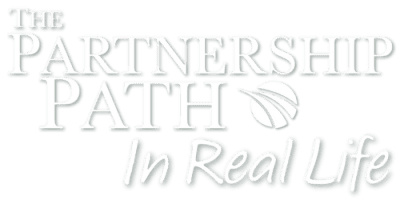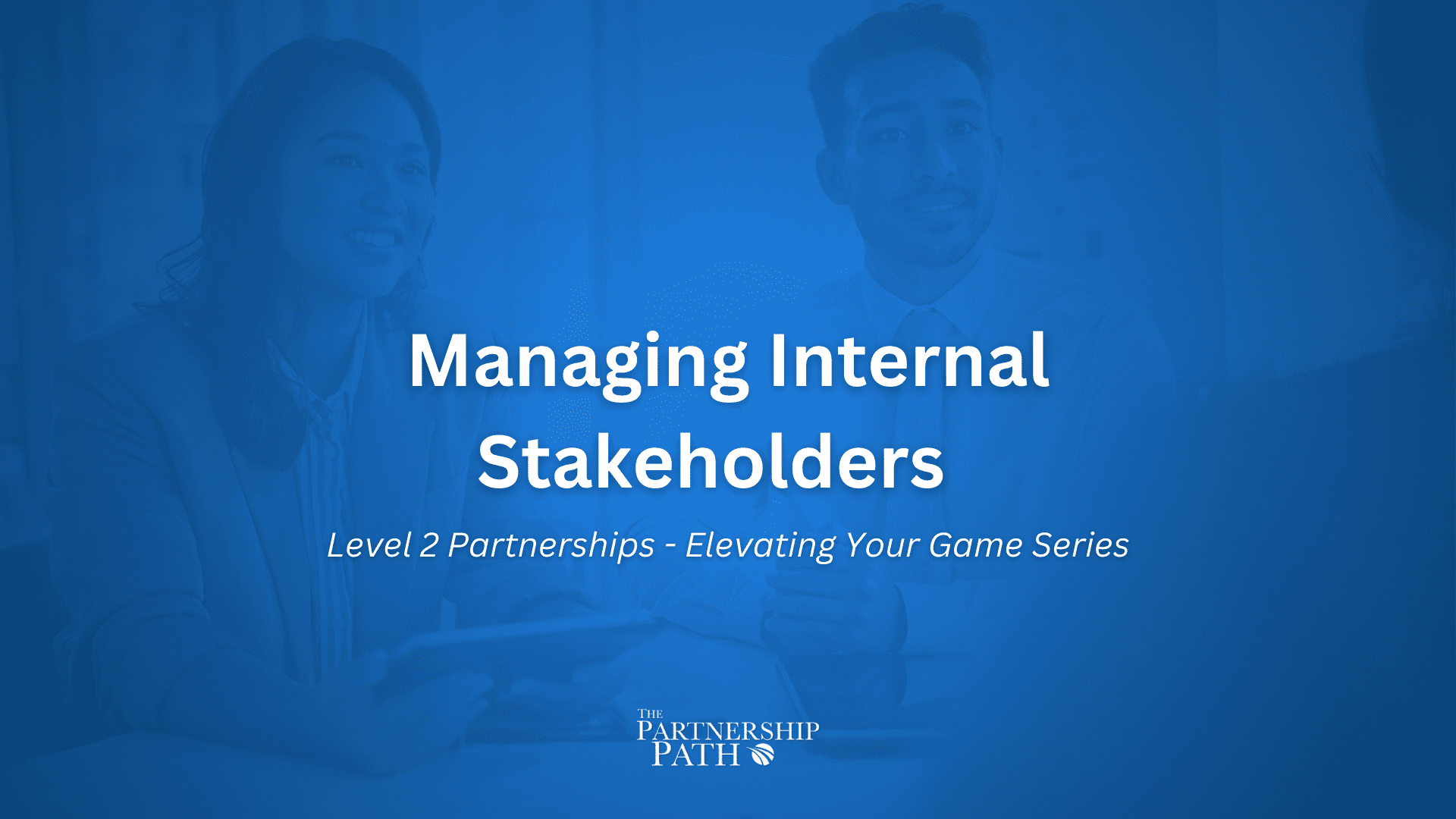Shauna Sampson at Illumio on Account and Territory Mapping with Partners
Episode Summary
In this episode of the “Partnership Path”, John Rudow interviews Shauna Sampson, a seasoned professional with extensive experience managing partnerships across major corporations like Microsoft and Google. They discuss the intricacies of account mapping, territory planning, and the critical role that strong partner relationships play in successful business growth. Shauna shares lessons learned from her career, offering valuable insights for those navigating the challenges of working with partners—whether at a large hyperscaler or a smaller company.
Transcript
John (00:01)
Well, good morning. Welcome to the podcast. I’m so glad that you’re here, Shauna . It’s been a long time since you and I have had a chance to talk. And so I’m anxious to kind of get an update from you and hear what you’re doing. And mostly though, I’m really anxious for you to share your experience and your expertise with our listening community. So I’m just really thankful that you agreed to be on the show with us.
Shauna (00:24)
Well, thank you for having me and it’s really great to see you. I have to just give you a shout out, John, a lot of the stuff that I learned from you and Bev in particular on your team, I’ve really applied in my new role. I obviously have come from very large companies and I’m now working for a smaller company and the same principles applied.
John (00:38)
Thank you.
Well, thanks. I appreciate that. Well, let’s start there, actually. Let’s introduce you to the audience and tell us a little bit about your background and what you do, and most importantly, how long have you been working with partners?
Shauna (00:58)
So a long time, my entire career, not with any intention, it just sort of happened. So I started in publishing. I started really managing partnerships with publishers, international publishers. I worked for one particular publisher who wanted to branch out. And from there, I ended up moving into consulting, building content management systems, working with distributors, learning the cable business, and then eventually became a product manager leading UX design at an SI, which involved partners.
John (01:03)
Yeah.
Shauna (01:28)
I mean, it just kind of unfolded part of it’s just the benefit of, you know, the way that the world worked at the time. And I eventually became a technical evangelist at Microsoft and one of the first women ever hired there for that role. And in that role was really more business than than technology, to be honest with you, and involved partners. It involved going out and evangelizing technology to partners and trying to show them how they could go make money.
John (01:30)
Yeah.
Okay. Yep.
That’s right.
Shauna (01:57)
right, with Azure, with SharePoint, Windows Phone. We learned a lot. We failed fast. It was amazing. Built my career at Microsoft, working with global partners, recruiting ISVs that were in the US and elsewhere onto the platform to build solutions and go co -sell together. Then I spent time at Google working with strategic customers. And then back to Microsoft. And now I have a very different job.
Well, it’s the same job really, but very different type of ecosystem working in cybersecurity.
John (02:25)
Ha ha.
Yeah. Well, look, this is why I wanted to have you on this episode, because not only have you done lots of different partner kinds of jobs, but you’ve done it at lots of different places. So you’ve seen lots of different perspectives of how both big hyperscaler vendors go to market with partners and how smaller companies do it as well. So super, super anxious to hear what you have to say. And this one is about account planning or account mapping and territory mapping.
Tony and I just did an episode on that. I know you listened to it. So let’s start there Tell me a little bit about kind of how you reacted to what Tony and I said in that episode
Shauna (03:10)
my goodness, that episode really resonated with me because I’m at a point right now in my business where the territory mapping has become so critical. And it’s not just the territory mapping, it’s really understanding the different types of partners, resellers, bars, if you will, whoever it might be in relation to some of the larger hyperscalers in those businesses that I also manage. One of the things that really kind of
John (03:34)
Yeah.
Shauna (03:37)
also resonated with me is that sometimes things go really wrong. And we come into these partnerships or relationships or businesses thinking we really understand how they work. And as a person who’s been in the partner business for a long time, I thought I kind of knew my stuff. And in this role, I realized, I don’t know nearly as much as I thought I did. There’s so much more to learn. And while the core skills are the same.
John (03:41)
Yeah
Yeah.
Yeah.
Shauna (04:06)
And the approaches, the foundational stuff that you talk about remains absolutely principal. It’s very important. There are nuances to the business, especially when you’re talking about another partner, managing territories, understanding, getting alignment on outcomes. There are a bunch of elements in there which you have to kind of take a step back and think about. So I really appreciated that conversation. It really hit home for me.
John (04:16)
course.
Yeah, well, so let me dig in on that. This challenge that you’re faced right now around territory mapping. Tell me a little bit about kind of what you’re doing to try and overcome that challenge. Look, the point of these episodes is to give our listeners some super practical, tactical, like, hey, here’s a challenge that I face and here’s what I’m trying to do about it. So tell us, educate us.
Shauna (04:54)
Yeah. So first, just a note on cybersecurity in general as a area or discipline technology field, it’s growing really fast. The typical enterprise customer has at least, if not more, 70 plus vendors just in security on their paper. Yeah. So it’s really a very complicated business. And there are a lot of reasons for that. It’s definitely a global business, but the markets are still very local.
John (05:13)
my gosh. Wow.
Shauna (05:24)
So when we talk about territory planning, we really need to think about, well, who are the partners in the mix and what are we trying to accomplish? If it’s co -sell, right? If it’s resell, what are the parameters of that? I think that the pitfalls, and I’m going to talk about one example, are around presumption and forgetting that humans actually run these partner businesses. So I was working with a very large partner. They are effectively MSP or sort of blended. Like they…
They sell some licenses, but they build services around solutions. Very large, very well known, particularly in the Americas. They work with a lot of hyperscalers, well, the three big ones that we’re all familiar with. Going into those planning conversations with this partner, we had some assumptions about, well, gee, they must be following, in terms of adoption of those hyperscalers, they must be following the same model. Their business must look the same, probably more in AWS.
Second would be Azure, third would be Google or GCP. Well, that’s not true. And the reason why it’s not true is because like every business, it’s regional. So going in and thinking about territory, what does that word actually mean? And understanding that each of the regions, and if you just looked at the US for this partner, we’ll say East Coast, West Coast, and Central, very little business with Microsoft Azure customers in the East.
John (06:31)
Yeah.
right?
Shauna (06:51)
very little with AWS in the West and in the middle was just a hot mix. Yeah. And when we dug a little bit more into it, we realized some of it was sliced by industry. Some of it was just because the actual sales engineers that were doing the work had a preference or had training or experience with those key technologies. And so that’s what they were really consulting around in those accounts. And, and,
John (06:58)
Right, right.
Yeah.
Shauna (07:21)
driving adoption of. So anyway, long story short, we came back saying, gee, we’re going to have to completely refactor our training programs, right? So that we’re not focused on the solutions we build on one cloud versus another for the entire group. We’re really going to need to think about how those sellers work in those territories and what they’re more likely to be interested in in terms of platform solutions. So that’s my story. And that took…
John (07:32)
Mmm.
Yeah.
Shauna (07:49)
Unfortunately, it took more time than it should have.
John (07:52)
It’s easy to talk about, right? It’s super painful to experience, right? Yeah.
Shauna (07:57)
It really is, especially in businesses that are quarter by quarter. I mean, salespeople, we all get paid by quarter by quarter. We have to quarterly targets. It can’t take a year to show results. So you have to step back and think about, and in that situation, we had to focus on one region. You can’t focus on everything. And that would be another really important lesson. You know, coming from a big company with lots of resources is really different from working for a startup where you have to prioritize and you have to show early wins.
John (08:04)
Yeah. Yeah.
That’s right.
Shauna (08:26)
So that completely changes, for me at least, how I approach any partner relationship or any type of territorial planning or seller planning. You know, you just, you can’t boil the ocean.
John (08:40)
And that’s a super powerful, right? That, cause this applies not just to the topic we’re on, but pretty much everything, right? That, that too often we walk into a situation with our own presumptions, our own assumptions of these guys are just like everybody else, or they’re going to do it the way I would do it if I were running it. And that’s almost never true. and, and we ended up wasting cycles just.
having to relearn like, wait, wait, that’s not right, wait, that’s not right. And in the meantime, the business is moving forward potentially without you. And that’s costly.
Shauna (09:13)
Yeah.
It is costly and one of the biggest factors, most valuable things is the trust, right? So with my own team, I want them to trust me and believe that I’m prioritizing or asking them to invest in the right things, not wasting their time. So again, you know, it’s never just about the partner manager in this case. It’s also about the team behind me. It’s about my sales team. It’s about the partner sales team, right? Everybody wants to be successful.
John (09:42)
Yeah. Sure.
Shauna (09:49)
Everyone wants to have impact. Everyone wants to get paid. So, you know, we have to keep that foremost in our minds. What motivates people to do the things that they do?
John (09:59)
Yeah. So share with me, I’m putting myself kind of in the position of listening to this as a partner manager, a PDM, whatever. And I recognize the scenario. I go, crap, I’ve been there before. Tell me what you would do different next time or what you’re now doing different in that exact same situation. What would you have done different? Super tactical.
would you set up that meeting or what would the agenda look like differently than what it did before?
Shauna (10:33)
So my first calls with that partner in particular were really just sort of get to know you calls, onboarding calls. What I didn’t do was ask the questions that probably came to mind because I just thought it was obvious or who knows why I didn’t. I mean, it’s sometimes we’re just not efficient. The efficient thing would have been, tell me about your business, tell me about how you were adopting.
John (10:40)
Yep. Yep.
Shauna (11:00)
these particular platform solutions and tell me where we should focus our enablement because that, that at the end of the day was really what we’re trying to drive. Like we want to enable your sellers to sell our stuff on these core platforms. How do we train you? Where do we focus? and so if I could go back in time, you know, I would have spent more time on that and then, you know, created a territory plan, or a training plan or enablement plan that was more focused on one region.
maybe one or two key solutions as opposed to the entire portfolio, right?
John (11:33)
Yeah. Yeah. Yeah. So the big deal here is to ask better questions or at least kind of challenge yourself to not make any assumptions and make sure that you’re asking them to describe. And when we talk about, I think, account mapping and territory mapping, right, that it’s critical to understand not just sort of what the accounts are or what the territories are, but to understand why
they segment them that way. Like, is there a reason for that? Because that’s going to impact us, right? If we understand kind of how they organize and we can explain the same in reverse, then it’ll be a lot easier to find those overlaps of where can we actually do business together.
Shauna (12:22)
Yeah, one example of that is industry, right? So if you just tap down another level, one of the things that I also learned in this experience was that that that partner had industry specializations, which was actually why certain clouds were being adopted over others, certain technology. And once I understood that, heck, now I really know how to go tell the story with the partner and enable them to go engage with the customers and have a lot more.
John (12:38)
Sure. Yeah.
Shauna (12:49)
specific assets and stories and the stuff that they need. And then finally, which sellers to connect them with on our side, right? Because at the end of the day, at least in this situation, it’s as much about co -sell between our teams as anything else.
John (13:03)
Sure. Yeah. It’s one of the things that’s striking me through this. And when you and I emailed, exchanged about getting together to do this, you know, there’s so many of the topics that we’re going to cover in this season of this podcast intermingle, right? To your point, right? That how we think about account mapping and territory mapping actually drives the way we think about co -selling, which, by the way, impacts how we should be preparing and motivating the teams and…
All that stuff really kind of blends together, makes it harder to really just have one conversation about one thing, right? That’s awesome. All right, well, let me ask you this. We’re coming up to time. So let me give you one last chance here to share with somebody. I want you to think about somebody who’s in it, because I know you’ve managed people like this, someone who’s brand new to partnering. And.
Shauna (13:42)
Great.
John (14:00)
whether they work for a small partner that has to work with a hyperscaler or they’re working for the hyperscaler who’s working with some of the smaller partners. What’s your advice to them specifically around account planning, account mapping and territory mapping of kind of trying to figure out where the sweet spot is that we can work together? What’s your advice to that newbie? What’s the best thing for them to do in that area?
Shauna (14:25)
Go find the data. So first of all, from either perspective, understand where your concentration of sales are for your company and what does that look like? Where do you have feed on the street? If it’s a region where you don’t have a strong partner sales motion with your own company, selling with partners, co -sale, then you know that’s not a good place to focus. And with the partner,
John (14:28)
What data? What do you mean?
Shauna (14:55)
I mean, it’s really super important if you’re on the other side to also understand, you know, what’s the historical data on sales? What do your customers look like? What’s the average deal size? What, how much time? What is the sales cycle? Make sure those things are matched up, manage expectations, build your plans around them, make sure they’re quarterly. That is the first thing I would do. If I were new to the role, I would really lean on the data, whatever the data is, whatever you can find.
in order to build your plan, in order to build your business case.
John (15:28)
You know what, it’s funny when you first started to give that answer, what jumped into my head was, and be honest, but I actually liked the way you phrased it way better because I think honesty has that emotional, kind of that emotional element to it versus look at the data, get the emotion out of it, and go after where the data tells you the opportunity is, not where.
your boss tells you it is or where marketing tells you, right? You got to look at the data and be honest on your end of what’s really going on in my company and then figure out how do we make it work.
Shauna (16:08)
I have one extra tip, and that is the following. If you are a partner manager or you’re new to the role, get access to Salesforce or Dynamics because that’s where you’re going to find the truth. It is the most important tool. If you’re in partner sales, don’t wait for somebody to tell you what’s really going on. You need to go find out what’s going on and make sure you can see how much of the business is actually partner -led, how much it is, and what that opportunity is. So that’s my tip is get access to it.
John (16:20)
Yeah, that’s right.
I love that. Yeah, that’s right. And don’t trust anything but the real data. Go get it. Yeah. Shauna, thank you so, so much for coming on the show. I love your experience. I love your perspective. I love the way you address it. And I love your vulnerability, talking a little bit about something that maybe you didn’t want to tell me. So I love that. Thank you so much. I’d love to have you back on another episode sometime if you’re willing.
Shauna (16:37)
Yes.
Yeah. Yep.
My pleasure, absolutely. This was fun. Thanks, John.
John (17:07)
Thanks, Shauna .
Key Takeaways
- Territory Mapping and Partner Dynamics: Territory planning isn’t a one-size-fits-all strategy; understanding regional nuances and partner specializations is crucial.
- Asking the Right Questions: Avoid assumptions and focus on asking targeted questions to understand partners’ needs and business models.
- Data-Driven Decisions: Always rely on data, not assumptions, to guide your partner strategy—this includes sales history, deal size, and sales cycles.



